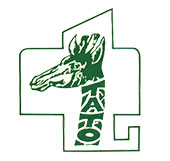Wildlife Photography Tips for Your Tanzania Safari Adventure
Capturing the raw beauty of Tanzania’s wildlife on camera is a dream for photographers, from amateurs to seasoned professionals. A Tanzania safari photography adventure with Tanzania Wild Camps offers unparalleled opportunities to photograph the Big Five, the Great Migration, and stunning landscapes in iconic parks like Serengeti and Ngorongoro Crater. Whether you’re aiming to snap a lion’s piercing gaze or the dramatic wildebeest river crossings, this guide provides expert wildlife photography Tanzania tips, equipment recommendations, and park-specific advice to elevate your skills. Ready to create breathtaking images? Let’s explore how to make your safari a photographic masterpiece.
Why Tanzania is a Photographer’s Paradise

Tanzania is a haven for wildlife photography, boasting diverse ecosystems and abundant wildlife. The Serengeti’s endless plains, Ngorongoro’s volcanic crater, and Tarangire’s baobab-dotted landscapes provide dramatic backdrops for your shots. With Tanzania Wild Camps’ photography-focused safaris, you’ll have access to expert guides, prime viewing locations, and extended game drives tailored for photographers. Whether you’re chasing the perfect sunrise silhouette or a close-up of a leopard in a tree, Tanzania delivers unforgettable moments.
Essential Equipment for Safari Photography
Choosing the right gear is crucial for capturing Tanzania’s wildlife. Here’s a rundown of must-have equipment and a checklist to ensure you’re prepared:
Cameras and Lenses
- Camera: A DSLR or mirrorless camera with fast autofocus is ideal. Popular choices include the Canon EOS R6, Nikon Z6 II, or Sony A7 IV for their low-light performance and speed.
- Telephoto Lens: A 70-200mm or 100-400mm lens is essential for capturing distant wildlife like cheetahs or elephants. For versatility, consider a 200-600mm lens for birds or far-off subjects.
- Wide-Angle Lens: A 24-70mm lens is great for landscapes, group shots, or camp scenes, like a sunrise over the Serengeti.
- Backup Camera: Bring a secondary body to avoid missing shots while changing lenses in dusty conditions.
Accessories
- Tripod or Monopod: A lightweight monopod stabilizes shots during game drives. For static setups (e.g., at camp), a tripod like the Manfrotto Befree is compact and effective.
- Bean Bag: Use a bean bag on vehicle windows for steady shots during game drives, a common practice on our safaris.
- Extra Batteries and Memory Cards: Tanzania’s remote locations mean limited charging opportunities. Pack at least two extra batteries and high-capacity SD cards (64GB or higher).
- Lens Cleaning Kit: Dust is common on safaris, so carry microfiber cloths and a blower to keep lenses spotless.
- Camera Bag: A weather-resistant bag like the Lowepro ProTactic protects gear from dust and rain.
Checklist for Safari Photography Gear
- DSLR/mirrorless camera
- Telephoto lens (100-400mm or longer)
- Wide-angle lens (24-70mm)
- Monopod or bean bag
- Extra batteries and charger
- High-capacity memory cards
- Lens cleaning kit
- Weather-resistant camera bag
- Binoculars (for spotting wildlife before shooting)
Best Times for Wildlife Photography in Tanzania

Timing is everything in wildlife photography Tanzania. Tanzania’s seasons and times of day impact lighting, animal behavior, and photo quality. Here’s how to plan:
Seasonal Timing
- Dry Season (June–October): Ideal for photography due to clear skies, vibrant lighting, and concentrated wildlife around water sources. The Great Migration’s river crossings in the Serengeti (July–September) are a highlight for dramatic action shots.
- Green Season (November–March): Lush landscapes and newborn animals make for vibrant photos, though rain may affect visibility. This season is perfect for lush scenery and fewer crowds.
- Shoulder Seasons (April–May, October–November): Offer a mix of green landscapes and good wildlife sightings, with softer light for creative shots.
Daily Timing
- Golden Hour (Sunrise/Sunset): The soft, warm light at dawn and dusk enhances colors and creates stunning silhouettes. Most Tanzania Wild Camps game drives are scheduled during these times.
- Mid-Morning: Animals are active, and the light is still favorable for crisp shots of predators hunting or grazing herds.
- Midday: Harsh light can create high contrast, but it’s great for black-and-white shots or capturing heat haze effects.
Park-Specific Photography Tips
Each Tanzanian national park offers unique opportunities and challenges for photographers. Here’s how to maximize your shots in key locations:
Serengeti National Park
- What to Shoot: The Great Migration, lions, cheetahs, and vast savannahs. Capture wildebeest crossings or predators stalking prey.
- Serengeti Photography Tips: Use a telephoto lens for distant herds and a wide-angle lens for sweeping landscapes. Position yourself near waterholes during the dry season for close-up shots. Our Serengeti tented camps offer prime access to migration routes.
- Lighting: Early morning light creates dramatic shadows; late afternoon light softens the plains’ golden hues.
Ngorongoro Crater
- What to Shoot: The Big Five (lion, leopard, elephant, buffalo, rhino) in a compact caldera. Black rhinos are a rare highlight.
- Ngorongoro Photography Tips: The crater’s steep walls create unique lighting challenges. Shoot during early morning to avoid harsh midday shadows. Use a polarizing filter to reduce glare on the crater floor. Our guides position vehicles for optimal angles.
- Lighting: Soft morning light is best; avoid midday when the crater’s depth causes high contrast.
Tarangire National Park
- What to Shoot: Elephant herds, baobab trees, and colorful birds like the lilac-breasted roller.
- Tarangire Photography Tips: Use a telephoto lens for elephants and a macro lens for birds or insects. Baobabs make stunning foregrounds for wide-angle shots at sunset. Our Tarangire safaris include extended stops for photography.
- Lighting: The park’s open landscapes offer consistent light, with golden hour accentuating baobab silhouettes.
Photography Techniques for Stunning Safari Shots
To capture Tanzania’s wildlife, combine technical skills with creative vision. Here are expert techniques:
- Focus on Composition: Use the rule of thirds to place animals off-center for dynamic shots. Include natural elements like acacia trees to frame your subject.
- Master Shutter Speed: Use a fast shutter speed (1/1000s or higher) for action shots like a cheetah running. For low-light or creative blur (e.g., a moving herd), try 1/60s with a tripod.
- Adjust Aperture: A wide aperture (f/2.8–f/5.6) blurs backgrounds, isolating animals like a leopard in a tree. A narrow aperture (f/8–f/11) keeps landscapes in focus.
- Shoot in RAW: RAW files retain more data, allowing better post-processing for Tanzania’s vibrant colors and contrasts.
- Capture Behavior: Focus on animal interactions—lions grooming, elephants playing in water—for compelling storytelling shots.
- Use Burst Mode: Wildlife moves unpredictably. Burst mode ensures you capture the perfect moment, like a lion’s yawn or a bird taking flight.
Post-Processing Tips for Safari Photos
Post-processing enhances your Tanzania safari photos. Use software like Adobe Lightroom or Photoshop for:
- Color Correction: Adjust white balance to reflect Tanzania’s warm tones, especially during golden hour.
- Exposure Adjustments: Brighten underexposed shots or recover details in bright highlights, common in midday light.
- Cropping: Refine composition by cropping distractions, like stray branches, to focus on the animal.
- Sharpening: Enhance details in fur or feathers without overdoing it, maintaining a natural look.
Capture Your Tanzania Safari Adventure
A Tanzania safari photography adventure with Tanzania Wild Camps is a chance to immortalize the wild beauty of Africa. From selecting the best camera for safari to mastering Serengeti photography tips, this guide equips you to create stunning images. With our photography-focused safaris, expert guides, and prime locations, you’ll return home with a portfolio of unforgettable shots. Don’t miss your chance to capture Tanzania’s wildlife in all its glory—book your photography safari today.























